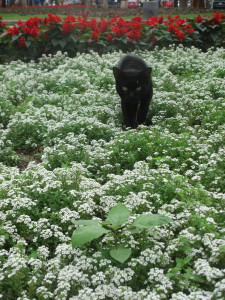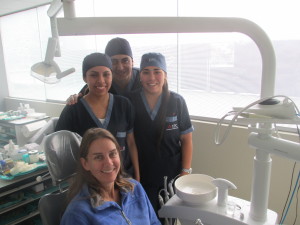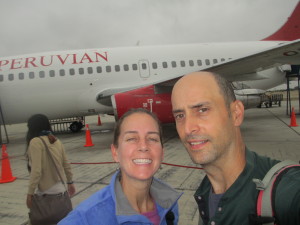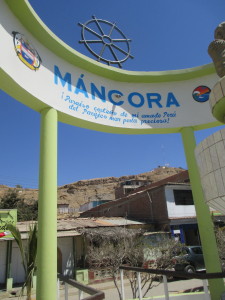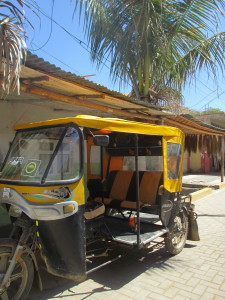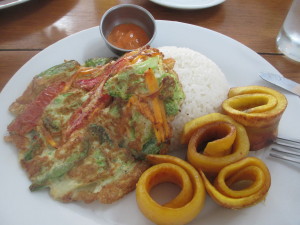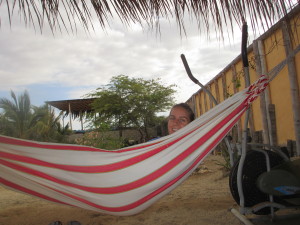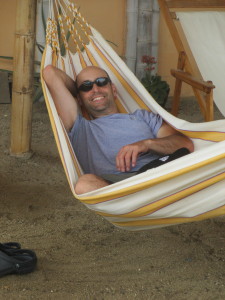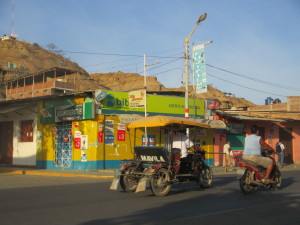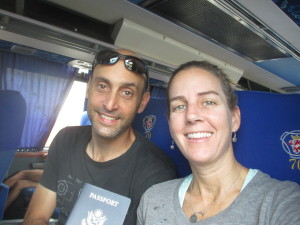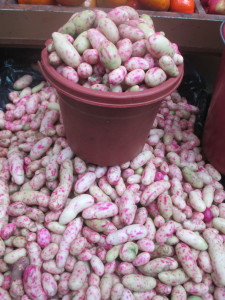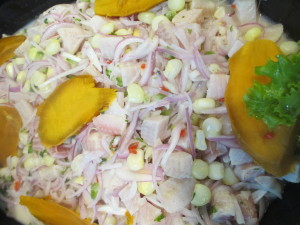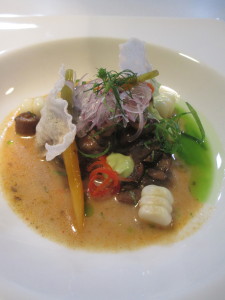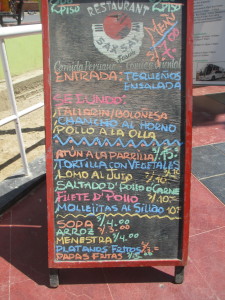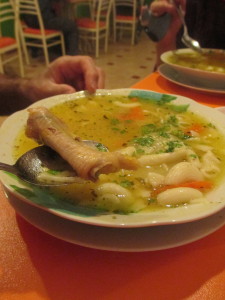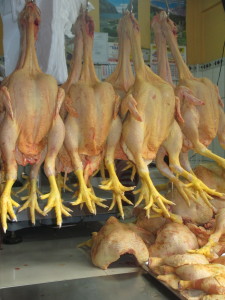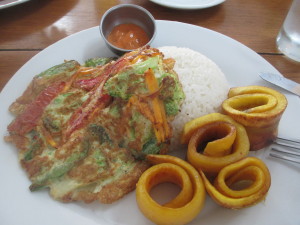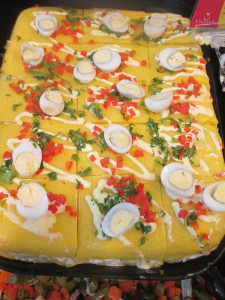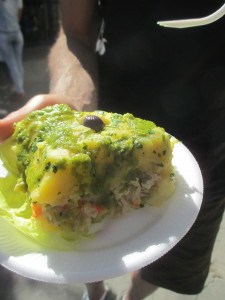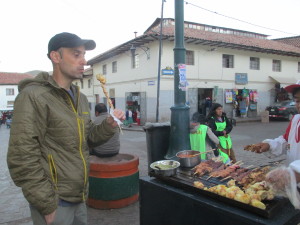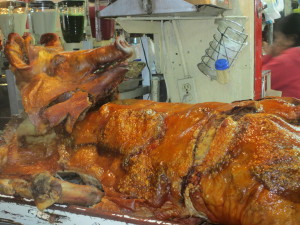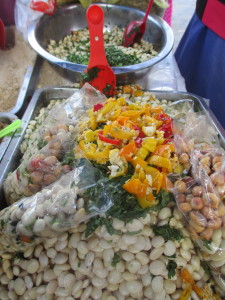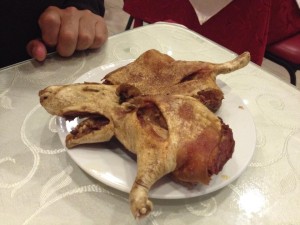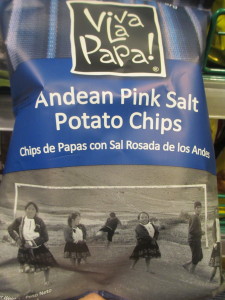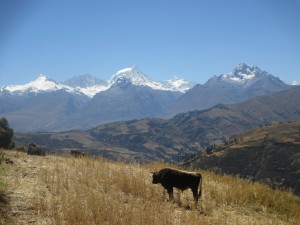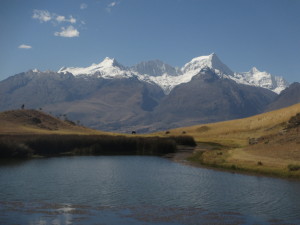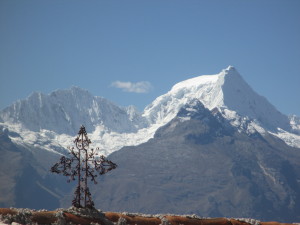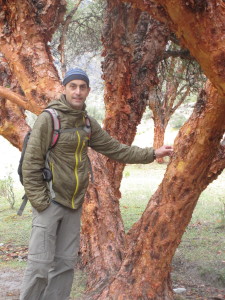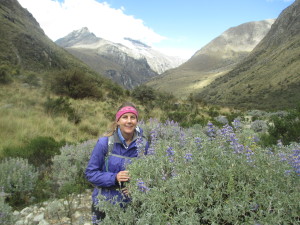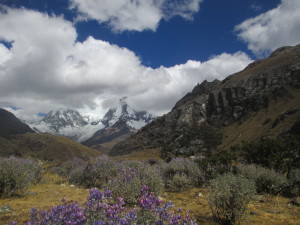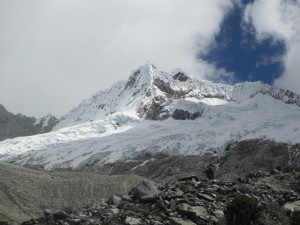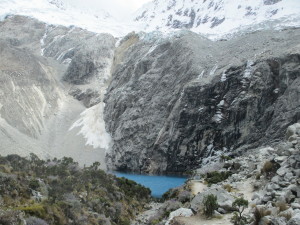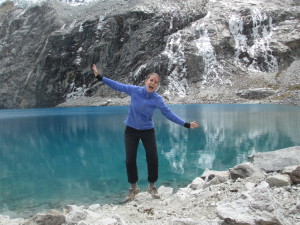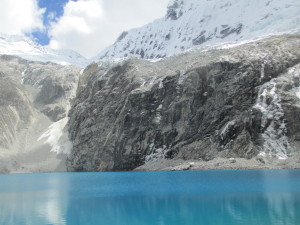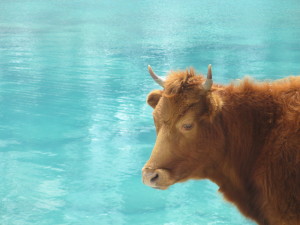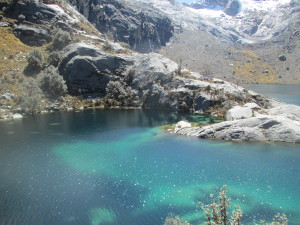I was afraid to leave Huaraz. My guts were in an awful state and spending eight hours on the bus to Lima sounded so horrible that I cried. I was so disappointed because I assumed that after five days of being sick I would feel better, but that wasn’t the case… I was actually feeling worse. Wanting to be brave, although I wasn’t really thinking straight, I agreed to get on the bus.
Luckily I made it to Lima without incident but I was super dehydrated and not exactly feeling like a million dollars. The next day Harry brought me to the hospital and I was hooked up to an IV. Thankfully my blood work came back negative. The doc believed that whatever I had was probably my Arequipa-born Evil Gut Monsters throwing a party. I was given a prescription and sent home with orders to drink a lot of water and eat soup when I was hungry. Of course my Peruvian doctor wanted me to eat SOUP! When don’t Peruvians eat soup?
He also told Harry to give me a massage twice a day, buy me lots of flowers and carry my backpack for an entire week. Well, maybe he didn’t exactly say all of that, I might have misunderstood some of his Spanish.
All in all, my trip to the hospital and pharmacy cost $260. Here’s a picture so you can see how cute and pathetic I was. My doc was pretty cute too, but Harry didn’t take a picture of him.
Lima: Round II
Since we’d already spent a week in Lima in early July, we really didn’t do much this time around since our goal was simply for me to get better. Of course we visited Kennedy “cat” Park again, and oh yeah, one afternoon I went to a dentist. I was very medically high-maintenance during this visit to Lima. I thought I’d cracked a filling a few months ago and wanted to get it looked at once and for all. Apparently my sensitive tooth was simply a product of my imagination, which is way better than needing a root canal. The dentist examined me and took a whole bunch of x-rays, and the entire visit cost $70.
Family Friend
One of Harry’s childhood neighbors lives in Lima with his Peruvian wife and their two adorable daughters. We had lunch with Brian one day at Maido, an award-winning Sushi restaurant. The guys ate some incredibly creative sushi while I sipped my tea. Later that day Harry and I visited Brian and his girls at their home. It was really fun to connect with him and to hear about his life in Lima.
Heading North to Ecuador. Slowly.
We assumed that we would just fly from Lima into Ecuador, but once we learned that each ticket would cost $500, we quickly went to plan B. We had already taken a bus from Lima to Trujillo on the north coast of Peru, and we didn’t want to retrace our steps. Instead we spent a third of the price and bought plane tickets to Piura in northern Peru and then a cheap bus ticket to Mancora. Our flight was only 90 minutes and it felt so decadent, almost like eating an enormous piece of chocolate cake for no special reason. After the flight we could barely climb on board the hot bus to take us north to the beach. Three long hours later we found ourselves on the Pacific Ocean in the little surfer town called Mancora.
Mancora Needs a Makeover
People who like to surf and party love this beach town, but to us it felt like it had seen better days. The Pan-American Highway serves as Mancora’s main street with buses, tuk-tuks and motorcycles zipping along all day. The landscape was hot and dry and the beach wasn’t that clean. Maybe it was because we were just ready to get to Ecuador, but we didn’t find any magic in Mancora. Luckily our hostel was an oasis of sorts with hammocks and a pretty garden.
On another note, three blog-worthy things happened in Mancora. Firstly, Harry was offered cocaine on the beach. He said no. Secondly, I treated myself to a haircut. My hair was washed in a bowl of cold water, it was combed out and the beautician made five snips in a straight line across the back with her scissors. The whole process lasted six minutes and cost me $4. Thirdly, I had an absolutely delicious vegetarian “menu of the day”; you can read about it here.
Crossing the Border into Ecuador
After our two night pit stop in Mancora we were ready to head north…. all the way north into Ecuador. We had been in Peru for almost three months and it was time to experience a new country.
We had some trouble buying our bus tickets to get out of town, or at least we thought we had some trouble. Really, we were just suspicious and paranoid that the tickets we bought were bogus. After we interrogated our ticket sellers several times Harry convinced me that everything would be OK. It turns out that I am way more skeptical than Harry is, and he’s way more trusting than I am. We actually balance each other out. We loaded our packs onto the roof of a mini van, hoping we weren’t being scammed. Ninety minutes later we reached an actual bus station. After we moved our stuff onto a “real” bus, we both breathed a big sigh of relief and hunkered down for the six hour ride across the border into Ecuador. We were on our way to Guayaquil for a quick stop before transferring to the lovely town of Cuenca.


